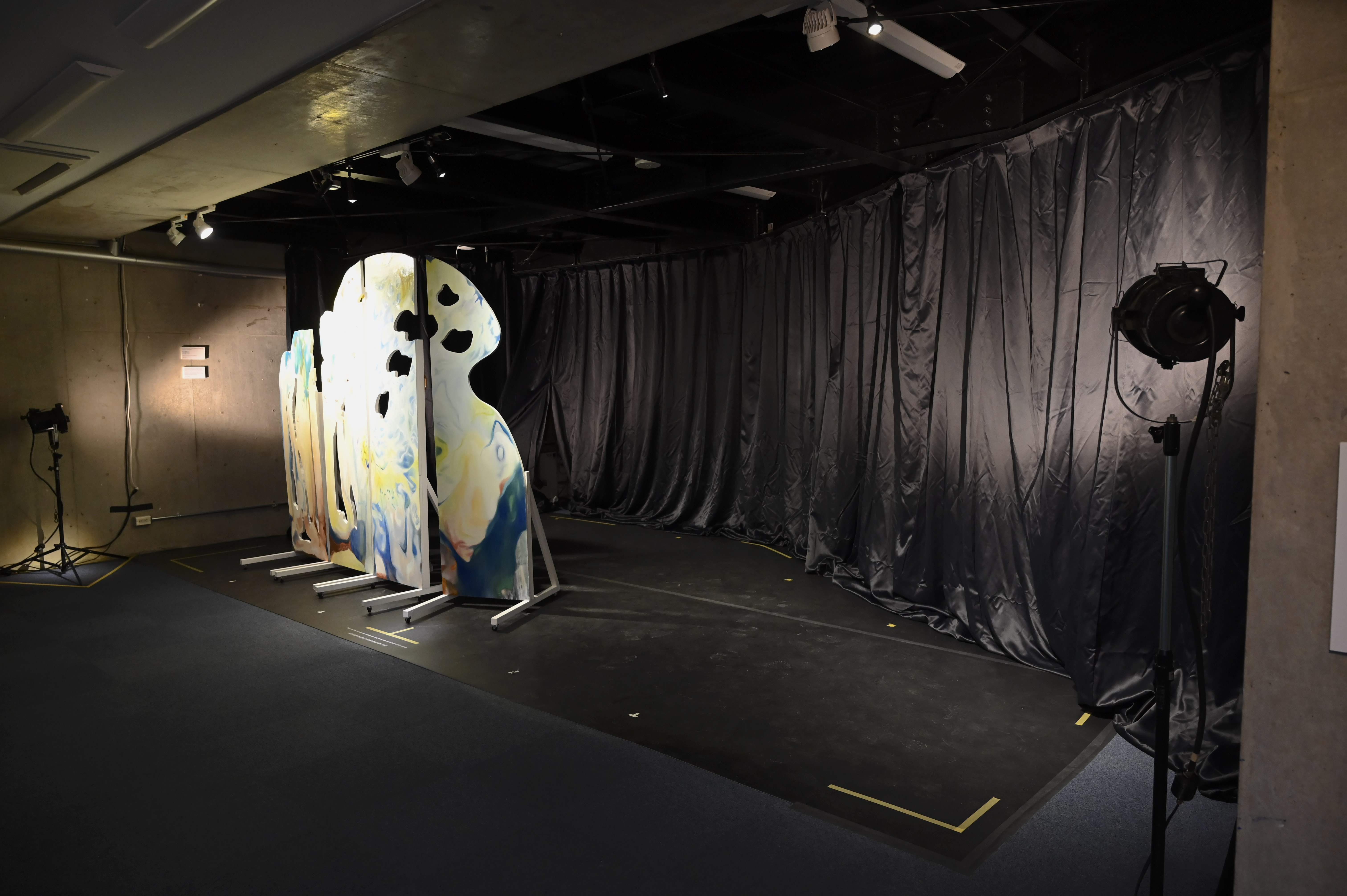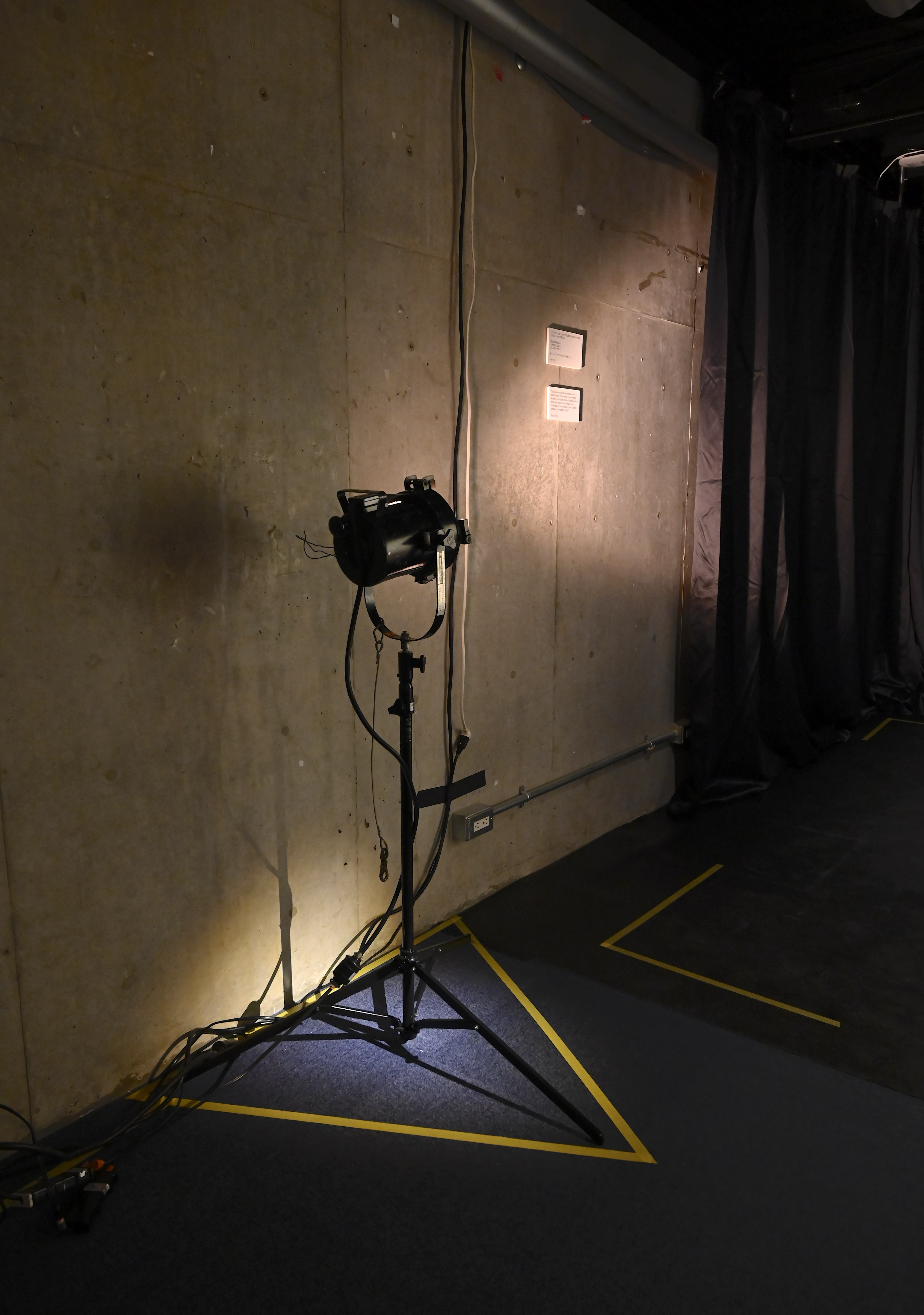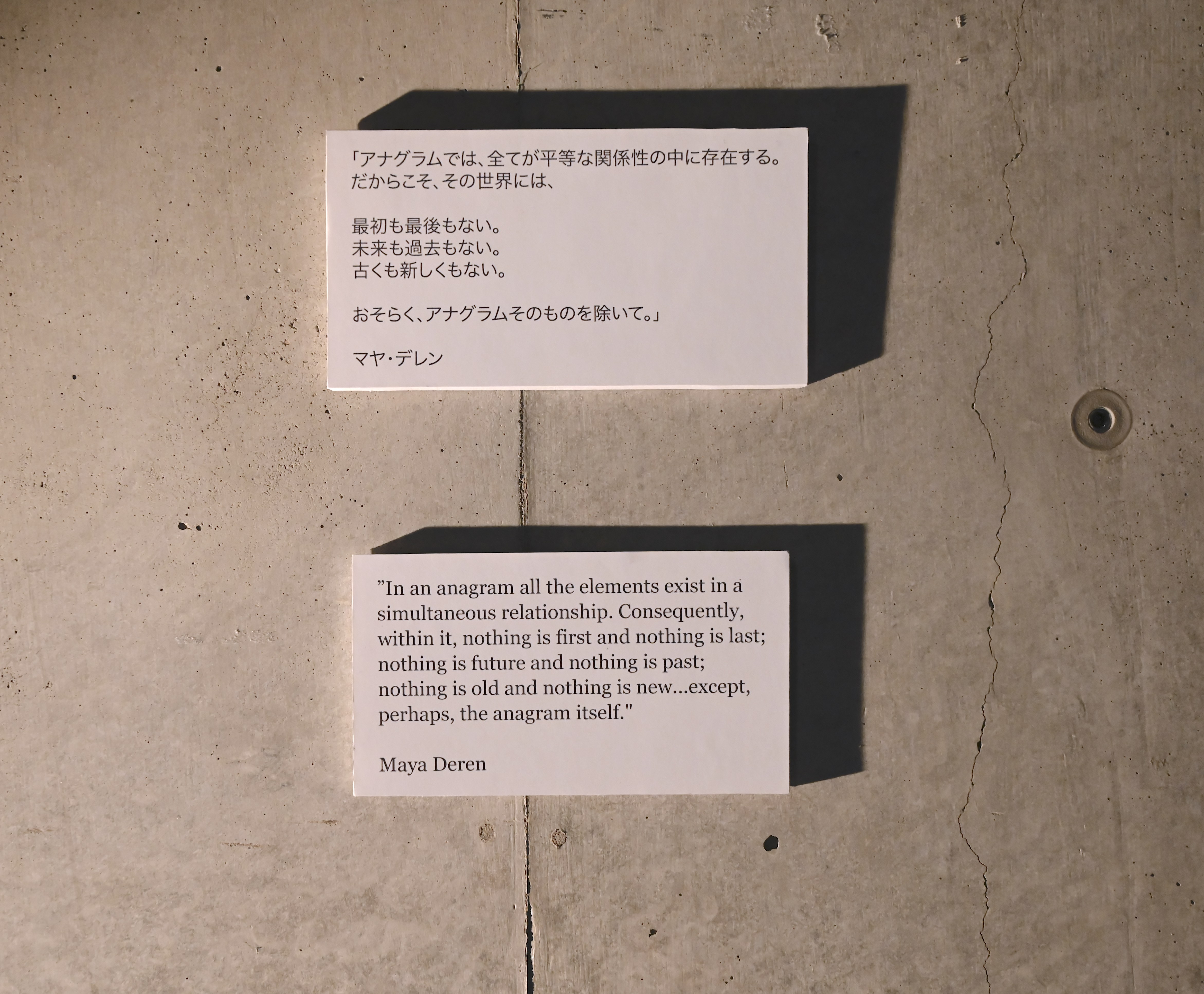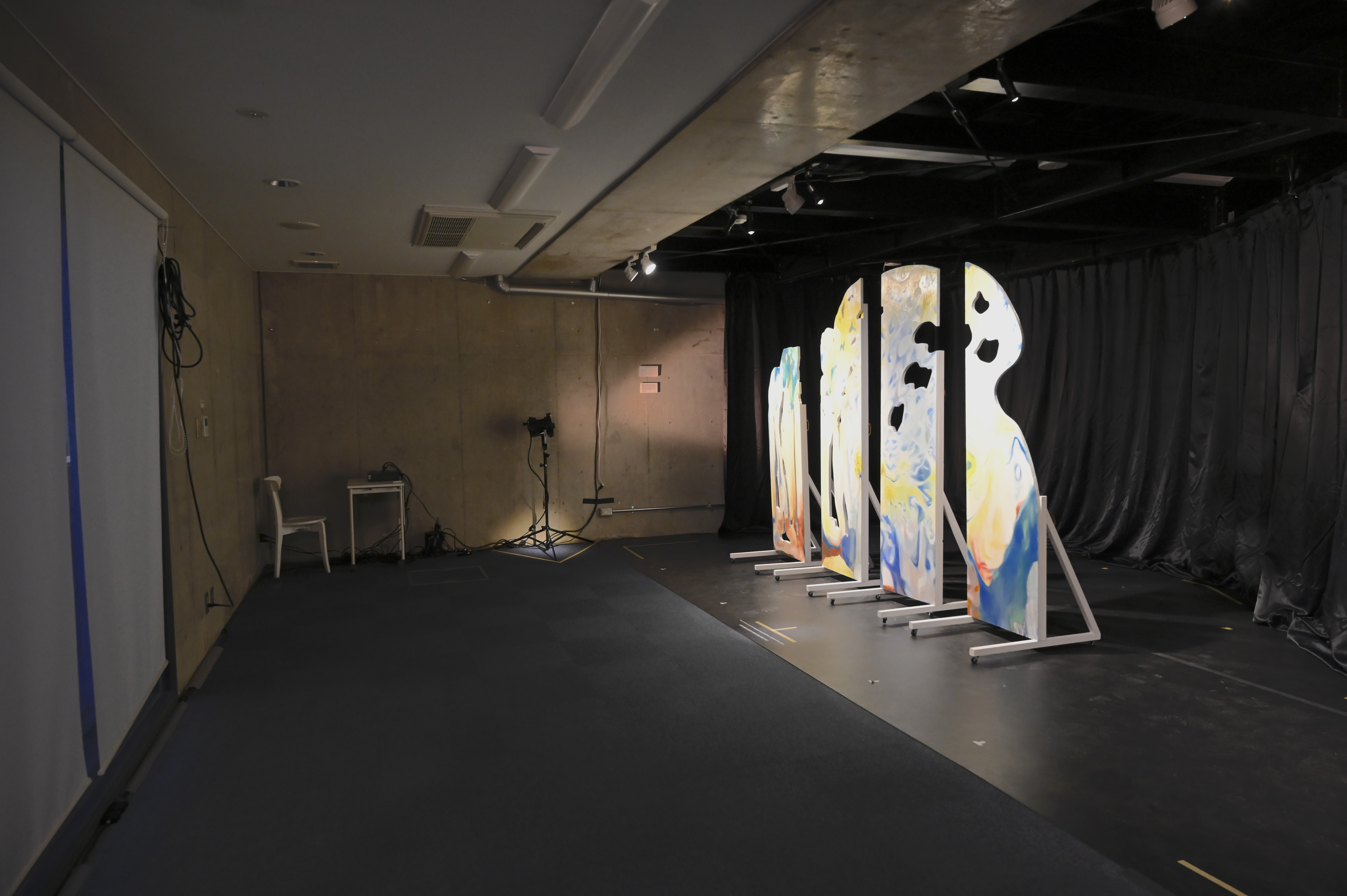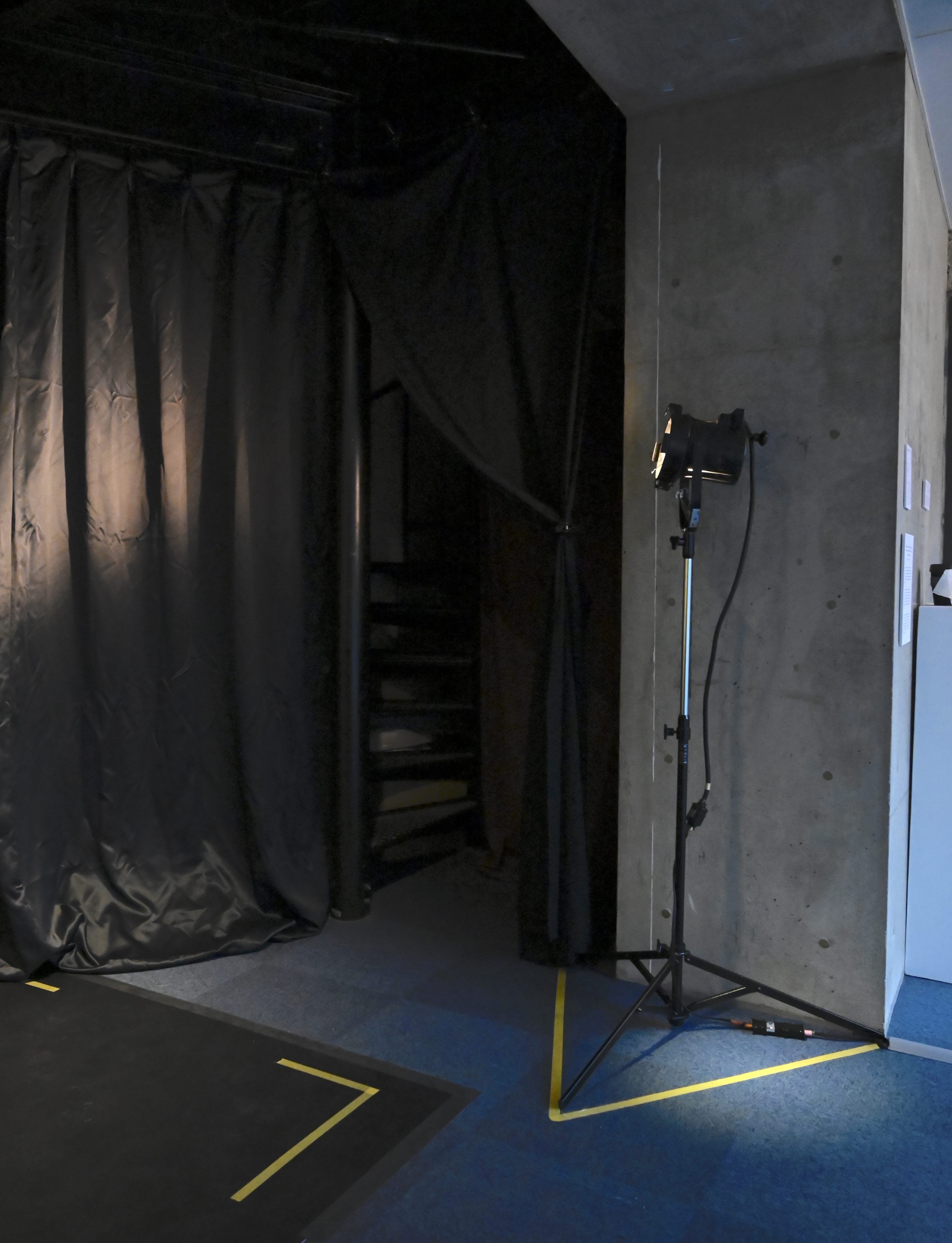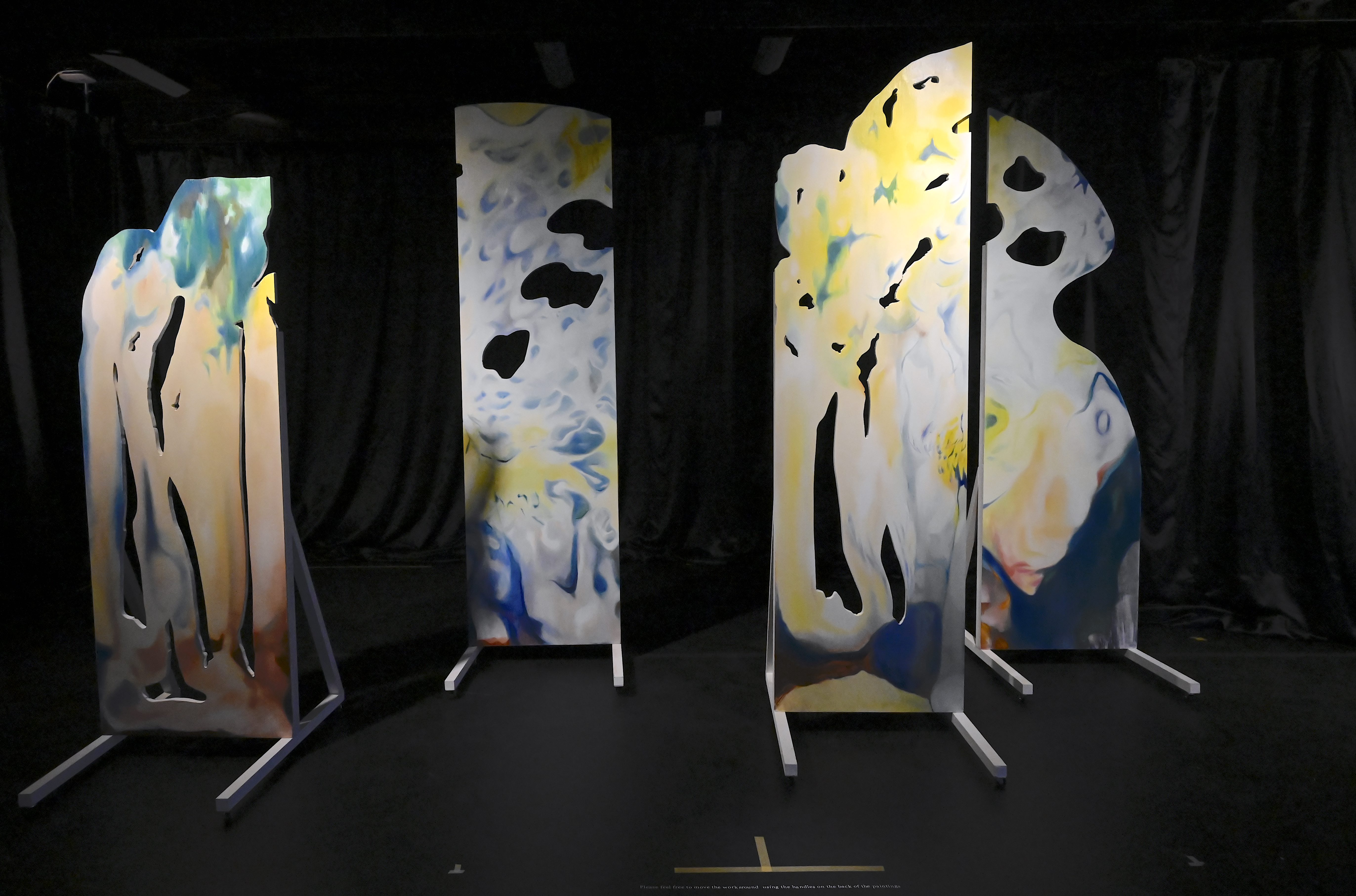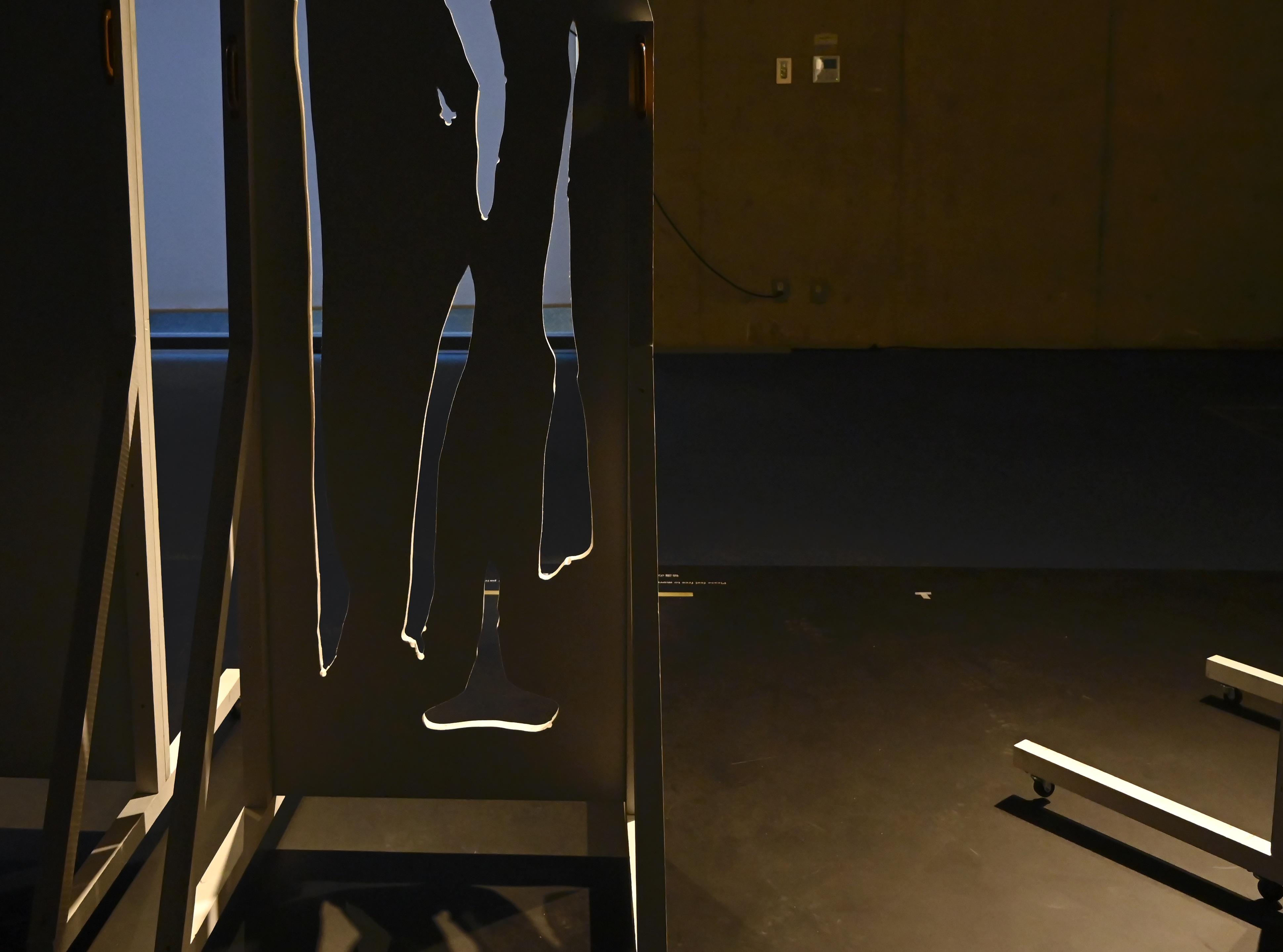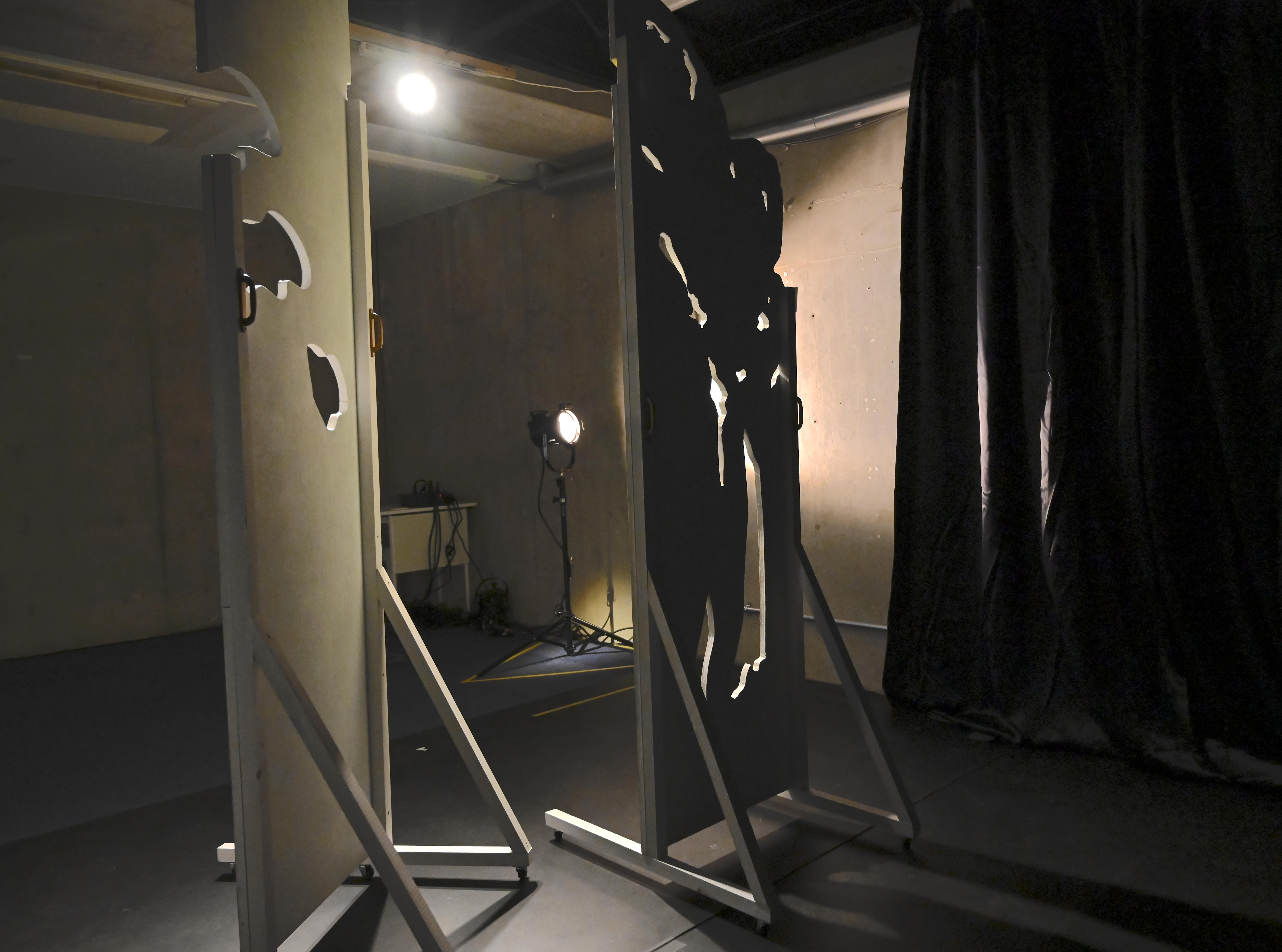Anagram・綴り変え
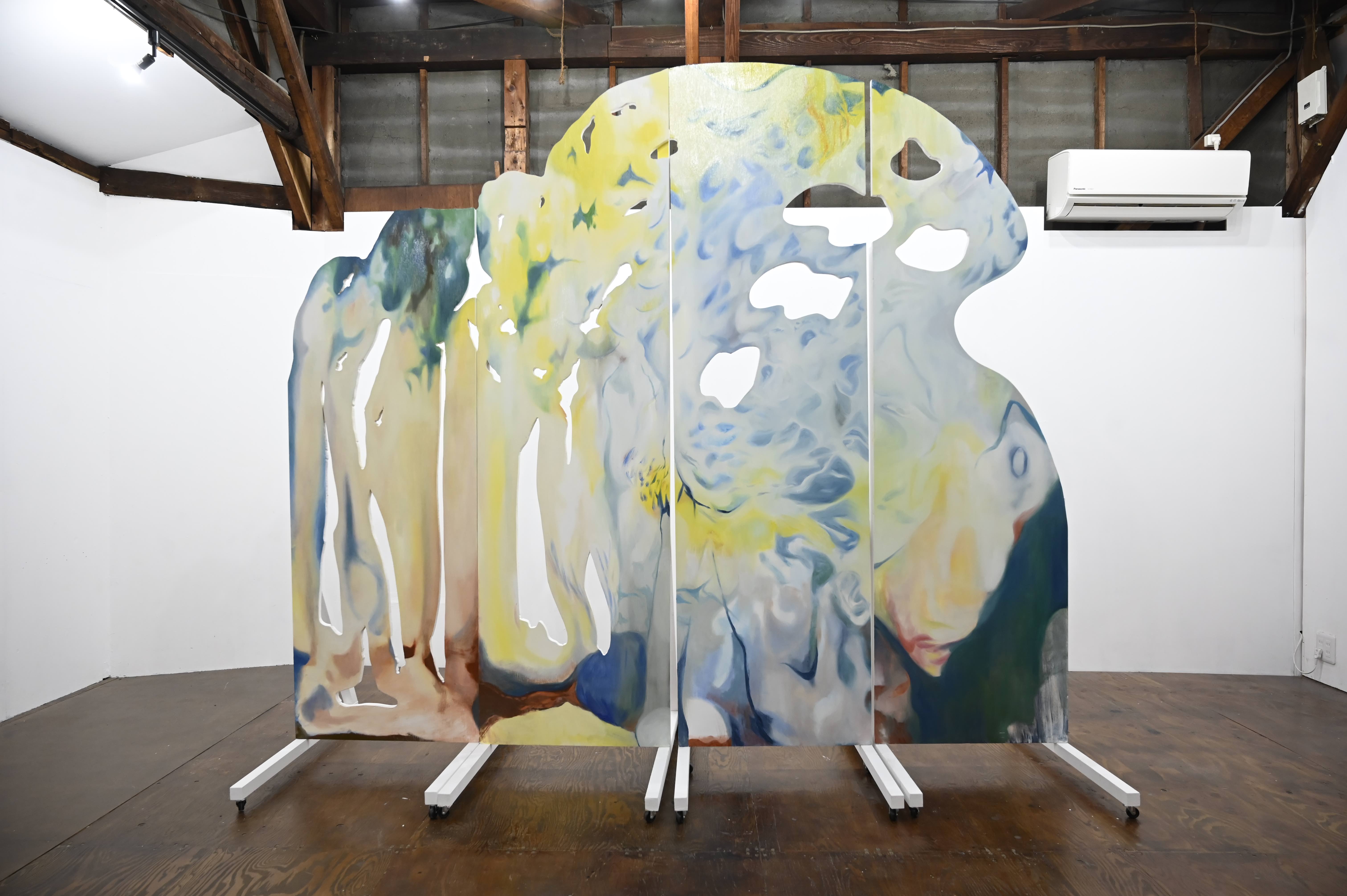
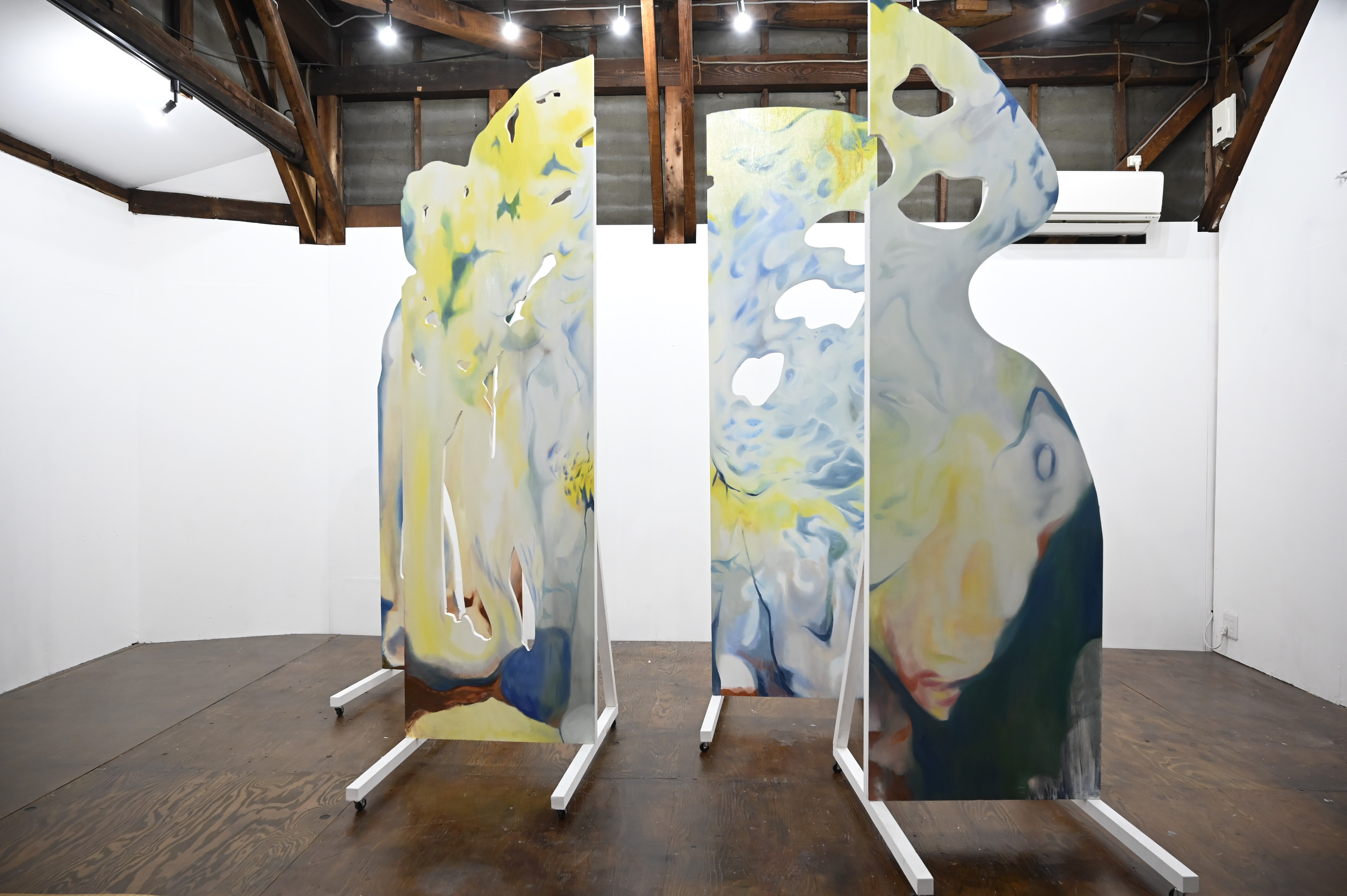
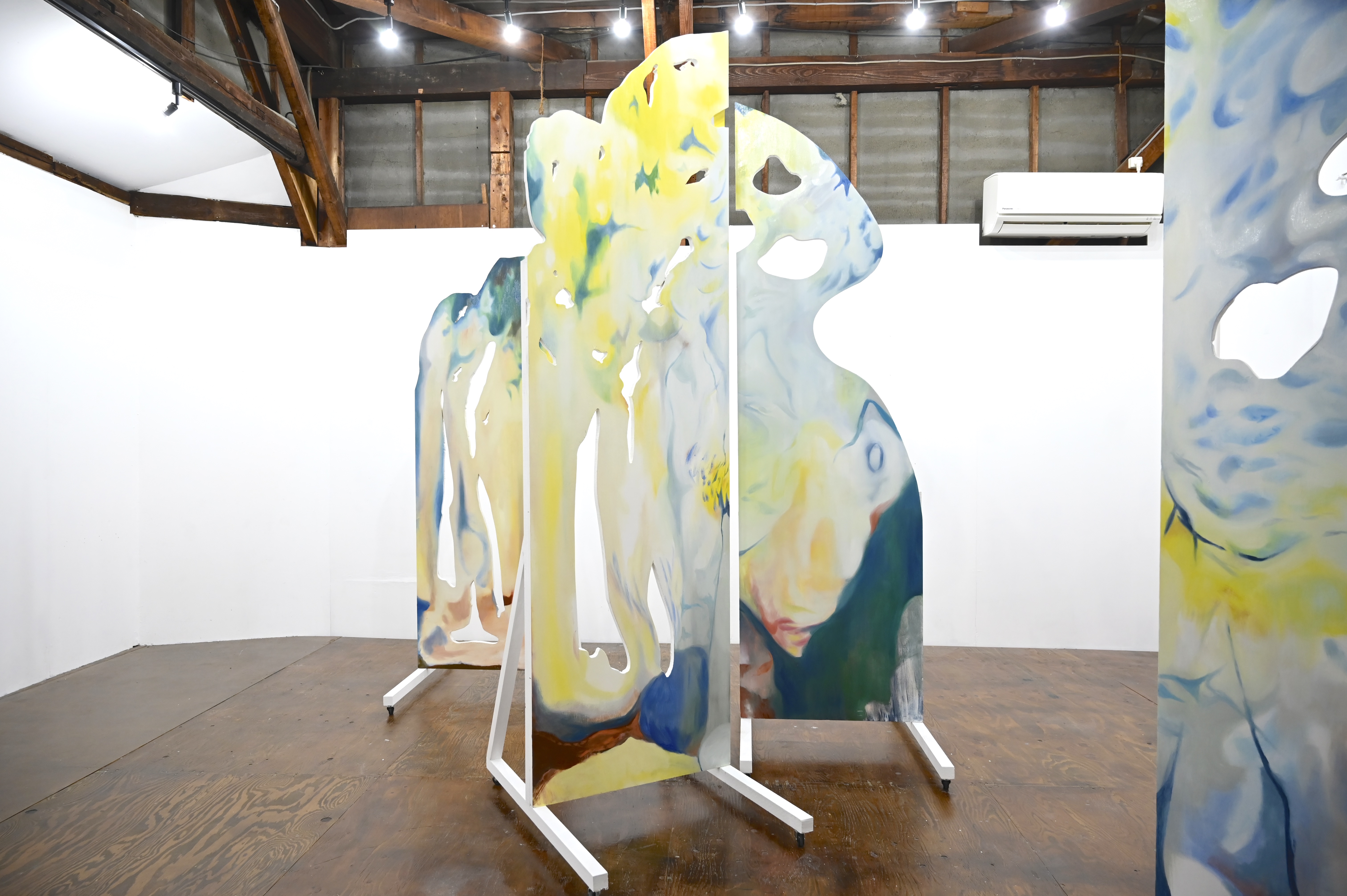
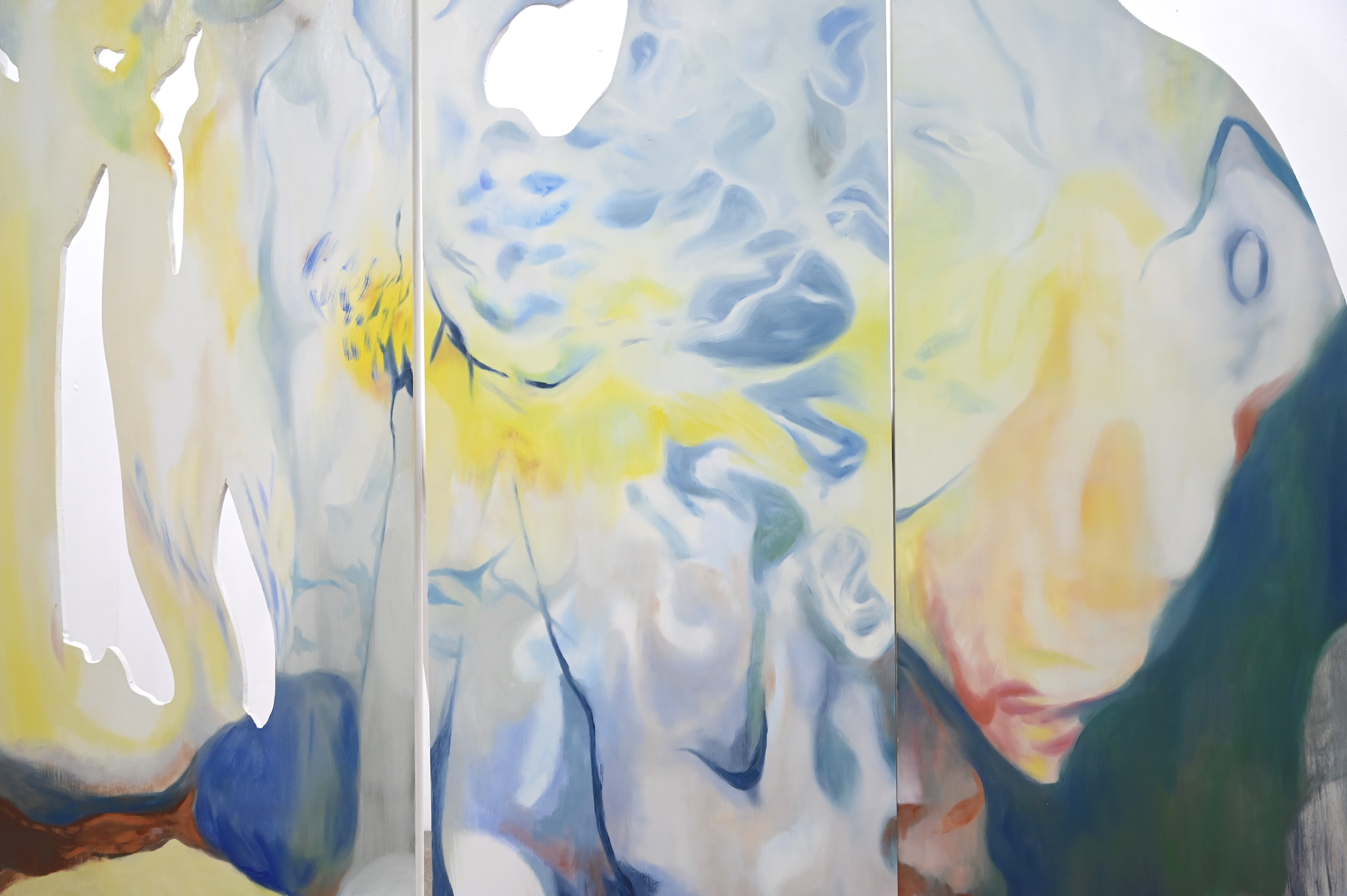
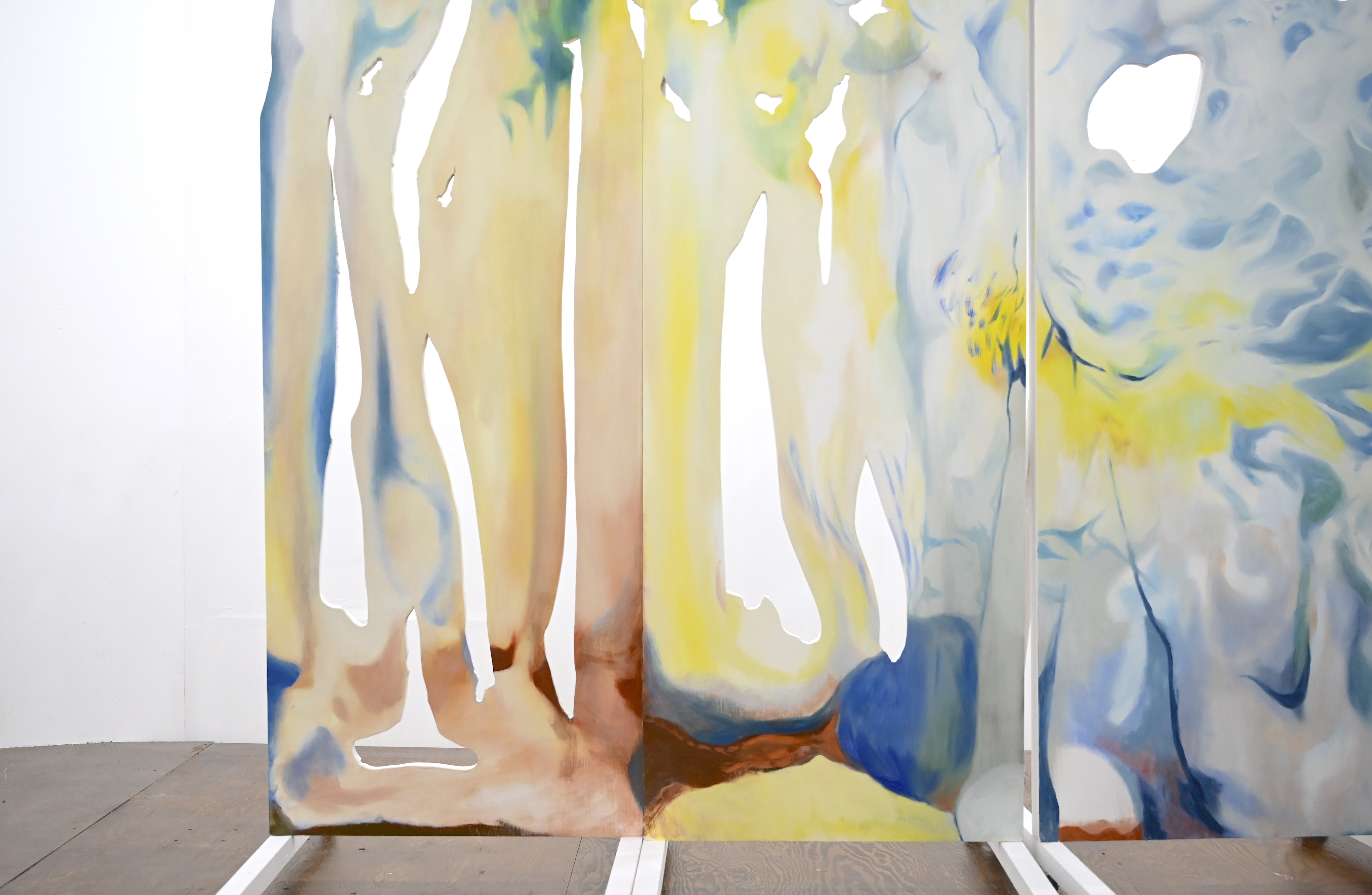

H65.4”-69.7” × W24” × D32.7”
H73.2”-85.8” × W24” × D32.7”
H87.4”-85” × W24” × D32.7”
H83.8”-67.7” × W24” × D32.7”
Acrylic and oil on wood, caster wheels
H1660-1770 × W610 × D830 mm
H1860-2180 × W610 × D830 mm
H2200-2160 × W610 × D830 mm
H2130-1720 × W610 × D830 mm
木材にアクリル、油絵、キャスター
H73.2”-85.8” × W24” × D32.7”
H87.4”-85” × W24” × D32.7”
H83.8”-67.7” × W24” × D32.7”
Acrylic and oil on wood, caster wheels
H1660-1770 × W610 × D830 mm
H1860-2180 × W610 × D830 mm
H2200-2160 × W610 × D830 mm
H2130-1720 × W610 × D830 mm
木材にアクリル、油絵、キャスター
Anagram: a form of wordplay in which words or phrases are created by rearranging the letters of a different word or phrase
e.g. Tokyo→ Kyoto
signature→ a true sign
Conceived from the utility of stage flats, “Anagram” consists of four abstract-shaped paintings on caster wheels. Much like its namesake, these panels can be reoriented in any order to create new images through their different placements. As the paintings intersect and overlap with one another, different colors and forms fluctuate between figuration and abstraction. Akin to the way writer W.G. Sebald compared the act of dreaming to a form of theater “in which we are at once playwright, actor, stage manager, scene painter, and audience”, the four panels explore the fluid concept of memory in their interchangeable nature.
“Anagram” also challenges the finite objecthood of paintings in their ability to be moved or “activated” by the viewer. The height and width of each panel are set specifically by sizes that are liftable by the artist or at most, as large as a standard able-bodied adult body. The stage-like installation aims to create an “in-between” space that straddles the illusions on a theatrical stage while revealing its mechanisms like in its backstage area, as well as to blur the boundary between the viewer and the performer as anyone who participates can be a performer.
Additionally, in her seminal essay “An Anagram on Art, Form, and Film” (1946) avant-garde filmmaker Maya Deren posited her creative approach to an anagram-like structure in which all elements such as form, aesthetic, and content were equally important and yet, interchangeable. Insisting against a narrow “horizontal” approach in cinema, Deren was referring to a “vertical” or “poetic” approach that was concerned “not with what is occurring but with what it feels like or with what it means.”
Similar to Deren’s concept, the four paintings in “Anagram” exist simultaneously with infinite orientations. Against the idea of images as static entities, what remains consistent is their fluidity.
As part of Kyoto University of Art’s MFA thesis 2023
アナグラム: 言葉の綴り変え遊び
例:Tokyo→Kyoto
signature→ a true sign
「アナグラム」は、舞台の平面の実用性から発想されたもので、キャスター付きの抽象的な形のペインティング4枚で構成されています。その名の通り、これらのパネルは自由に向きを変えることができ、配置を変えることで新たなイメージを生み出すことができます。ペインティングが互いに交差し、重なり合うことで、色や形が具象と抽象の間で揺れ動きます。W・G・ゼーバルトが、夢を見るという行為を「劇作家、俳優、舞台監督、場面画家、観客である」という演劇に例えたように、4枚のパネルは交換可能であることから、記憶という流動的な概念を探っている。
「アナグラム」は、絵画の有限な物体性を、鑑賞者によって動かされたり「活性化」されたりする能力に挑戦する。各パネルの高さと幅は、アーティストが持ち上げられるサイズか、せいぜい標準的な健常者の身体と同じ程度の大きさで具体的に設定されている。このインスタレーションは、舞台上の幻想を跨ぎながら、舞台裏のような仕掛けを見せる「中間」の空間を作り出すこと、また、参加する誰もがパフォーマーになりうることから、鑑賞者とパフォーマーの境界を曖昧にすることを目指している。
また、前衛映画作家のマヤ・デレンは、代表的なエッセイ「芸術、形式、映画に関するアナグラム」(1946) の中で、形式、美学、内容といったすべての要素が等しく重要で、しかも交換可能であるというアナグラム的構造を自分の創造的アプローチとして提起している。デレンは、映画における狭い「水平」アプローチに反対し、「垂直」または「詩的」アプローチに言及した。「何が起こっているかではなく、それがどのように感じられるか、何を意味するか」に関心があった。
デレンのコンセプトと同様に、「アナグラム」の4枚の絵画は、無限の方向性を持って同時に存在している。イメージは静的な存在であるという考え方に反して、一貫しているのはその流動性である。
京都芸術大学大学院卒業展発表2023年


